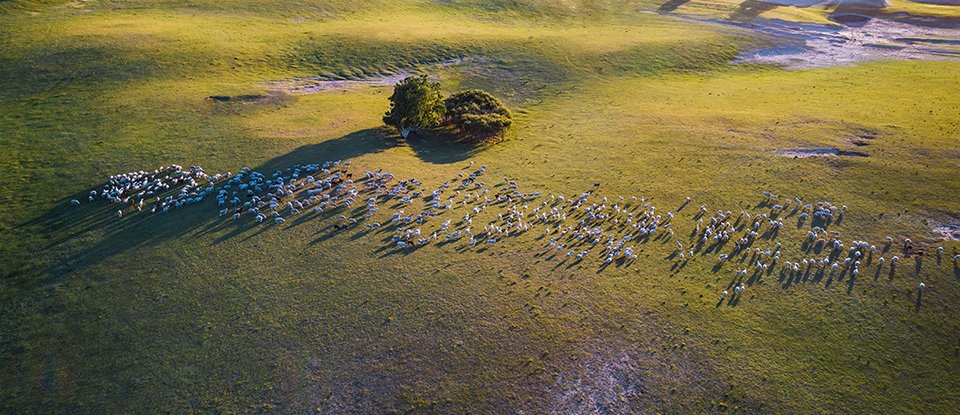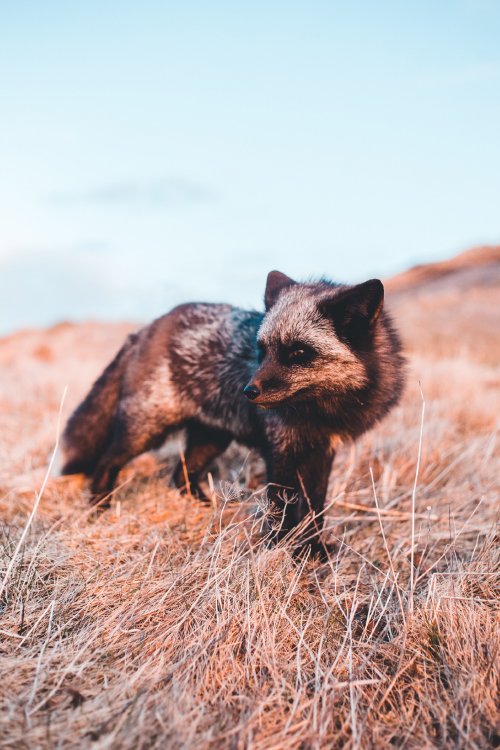
The History of Domestication—Taming the Tale
Evolutionary history presents its own explanation for the domestication of animals—but Scripture gives a different account.
When did someone first pet a dog, shear a sheep, or milk a cow? Genetic evidence shows that dogs descended from the gray wolf, sheep come from the wild mouflon (MOO-flon), and cows are the last remnant of an extinct animal called the aurochs (AW-rahks). All these ancestors were wild. It took human intervention to transform wild beasts into domestic farm animals and household pets. So when did this transformation happen? Consider the history of the horse.
According to secular models, the story of horses began 3.5 million years ago, when the Hagerman horse first evolved in North America. This animal supposedly became the common ancestor of all equines today, including zebras, horses, and donkeys. Equines spread to Asia 2.5 million years ago, crossing the Bering land bridge during an ice age. The Eurasian steppe, a grassy plain stretching from China to Germany, was the perfect environment for equines to evolve into the tall, swift, modern horse. Then, just 4,000 years ago, nomadic tribes successfully tamed wild horses in what is now southern Russia. All modern horse varieties descended from that original population via selective breeding. People bred these animals for desirable traits, producing swift Arabians, giant Clydesdales, and tiny Falabellas. But does this secular narrative match the evidence in nature—and in Scripture?
From Wild to Rideable
In less than 40 years and 35 generations, they bred foxes that wag their tails and seek attention from people.
The central problem with this evolutionary story is the assumption that changes in animal populations take hundreds and thousands of years. Observational data shows the opposite. One famous experiment in selective breeding has been running since 1959. Starting from a population of wild silver foxes, Russian researchers selectively bred only the foxes that showed the least fear toward humans. In less than 40 years and 35 generations, they bred foxes that wag their tails and seek attention from people. The foxes even started to look more like pet dogs, displaying floppy ears and a variety of coat colors. These sudden changes in foxes show that domestication can happen rapidly. Likewise, horses didn’t need millennia to go from wild to rideable.
Evidence in Scripture

Pictured is a dark-haired silver fox similar to the foxes used in the Russian experiment.
A close reading of Scripture confirms that the speciation and domestication of horses was not a long process. Horses are first mentioned in the book of Genesis when “Joseph gave [the Egyptians] food in exchange for the horses, the flocks, the herds, and the donkeys” (Genesis 47:17). Notably, both horses and donkeys are mentioned. We know these two animals are related because they can breed to produce hybrids called mules or hinnies. So even though horses and donkeys are classified as different species, they are part of the same created kind—Equidae, or the equid kind.
The equid kind was represented by just two animals on Noah’s ark. These two ancestors gave rise to the zebras, donkeys, and horses we recognize today. But the end of the flood (~2347 BC) to the first mention of donkeys during Abraham’s life (~1950 BC) was less than 400 years.
Could just two animals produce dozens of species in so little time? Yes. In fact, post-flood conditions would have driven animals to rapidly diversify. Starting from the mountains of Ararat, animal kinds could migrate in several directions, splitting related animals into geographically isolated populations. These populations became distinct species with different traits. The genetic variety God designed in the ark animals allowed their descendants to adapt to diverse habitats in the post-flood world, further sharpening the differences between related species. Today, speciation is less frequent, as we would expect in a more stable environment. But in the few cases when we have observed speciation, it only takes a few generations.
Domestication is even easier to explain in a short time span. We know from the fox experiments that selective breeding can produce domestic animals in fewer than 40 generations. The post-flood patriarchs certainly understood the mechanics of selective breeding, as Jacob demonstrated with his uncle Laban’s sheep (Genesis 30:37–43). While working as a shepherd for his uncle, Jacob was promised the striped, speckled, and spotted sheep as his payment. He selectively bred the strongest animals to have those coat patterns and consequently had larger and stronger herds than his uncle.
Although selective breeding appears in Genesis, horse breeding is not specifically mentioned. Consequently, the secular model may be correct that the original horse breeders were nomads in southern Russia 4,000 years ago. That date places them shortly after the separation of languages at Babel, so the horses they bred shared a common ancestor with donkeys only three hundred years earlier, not three million.
Domestic
Domestic animals have been selectively bred to meet human needs. Horses are considered domestic animals, along with dogs, cows, sheep, and many other familiar creatures. These animals often display friendly behavior toward humans.
Wild
Wild animals exhibit fear and aggression. Domestic horses and wild zebras are related, but they display significantly different behavior toward people. Zebras are aggressive and unpredictable, making them very difficult to tame, much less domesticate.
Feral
Feral animals are wild animals that show fear toward humans even though their ancestors were domestic. An example are the mustangs in the western US, which descend from European domestic horses.
Straight from the Horse’s Mouth
So horses have not trotted a multi-million year path to our pastures today. They shared ancestors with all other equids on the ark just 4,300 years ago. Less than 400 years later, these equids separated into several varieties, one of which became the species we know as the modern horse. From there, selective breeding produced the stronger, faster, and friendlier horse breeds we recognize today. God designed animals with adaptable genetic diversity, meaning the traits we selected when domesticating animals were present from creation. The domestic animals that enrich our lives point to the Creator’s foresight.
Answers Magazine
January–March 2023
Recommended Resources

Answers in Genesis is an apologetics ministry, dedicated to helping Christians defend their faith and proclaim the good news of Jesus Christ.
- Customer Service 800.778.3390
- © 2024 Answers in Genesis





